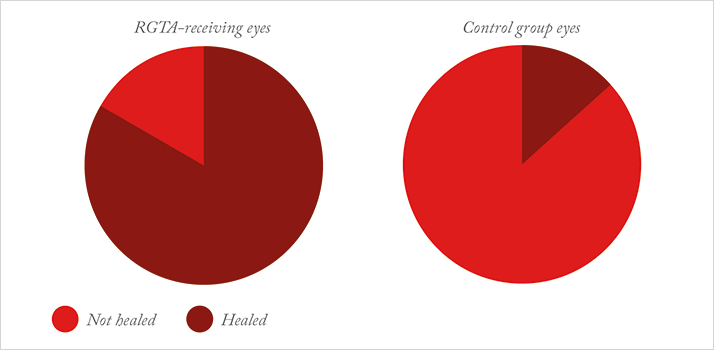
Corneal collagen cross-linking (CXL) is a widely used method of halting keratoconus progression. The most appropriate technique is up for debate: whereas some patients are able to withstand the removal of the corneal epithelium for the procedure (“epi-off” – currently the most effective form), others might prefer the less invasive (but, despite many improvements in the technique, still less effective) “epi-on” method, where the corneal epithelium is left intact. The benefit of epi-on CXL is that healing is faster, less painful, and carries a lower risk of infections and visual disturbances. Can you mitigate the downsides of removing the epithelium? At the moment, post-CXL treatment includes topical antibiotics, analgesics, artificial tears, and bandage contact lenses – but even taken together, these interventions can still leave patients in considerable discomfort during the healing period. Koray Gumus, a researcher at Erciyes School of Medicine in Kayseri, Turkey, decided to take a different approach – to try to reduce the time during which patients are at risk of pain and infection by focusing on faster healing after corneal de-epithelialization. Gumus developed a new type of matrix therapy agent known as ReGeneraTing Agent (RGTA), which consists of large, biodegradable nanopolymers. The polymers are designed to mimic the glycosaminoglycans damaged during epithelial removal, and act to help recreate an extracellular matrix microenvironment that should allow the corneal epithelial cells to heal faster.
Gumus tested RGTA in 30 eyes of 30 patients who received epi-off CXL and found that the healing time of RGTA-treated patients was significantly shorter than that of the control group – after two days, 83 percent of eyes in the RGTA group had healed completely, compared with 13 percent of eyes of patients in the control group (see Figure 1). The RGTA-receiving group also reported significantly lower ocular pain scores on days 0, 1 and 2; lower burning and photophobia scores on days 1 and 2; and lower stinging and tearing scores on days 2 and 3. The results still need verification in a larger population and longer follow-up data – but nevertheless, RGTA looks to be promising agent for promoting corneal healing and patient comfort after epi-off CXL.
References
- MK Gumus, “A new matrix therapy agent (CACICOL20) for faster corneal healing following epi-off crosslinking with ultraviolet A and riboflavin”. Presented at AA0 2015; November 16, 2015; Las Vegas, NV, USA. Abstract #PA067.
